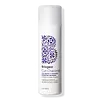What's inside
What's inside
 Key Ingredients
Key Ingredients

No key ingredients
 Benefits
Benefits

 Concerns
Concerns

 Ingredients Side-by-side
Ingredients Side-by-side

Water
Skin ConditioningSodium Lauroyl Methyl Isethionate
CleansingCocamidopropyl Betaine
CleansingAcrylates Copolymer
Glycol Distearate
EmollientGlycerin
HumectantPolysorbate 20
EmulsifyingPhenoxyethanol
PreservativeSodium Chloride
MaskingTrisodium Ethylenediamine Disuccinate
Laureth-4
EmulsifyingSodium Hydroxide
BufferingSodium Benzoate
MaskingPolyquaternium-10
Ethylhexylglycerin
Skin ConditioningPersea Gratissima Oil
Skin ConditioningAleurites Moluccanus Seed Oil
Skin ConditioningCitric Acid
BufferingLactic Acid
BufferingWater, Sodium Lauroyl Methyl Isethionate, Cocamidopropyl Betaine, Acrylates Copolymer, Glycol Distearate, Glycerin, Polysorbate 20, Phenoxyethanol, Sodium Chloride, Trisodium Ethylenediamine Disuccinate, Laureth-4, Sodium Hydroxide, Sodium Benzoate, Polyquaternium-10, Ethylhexylglycerin, Persea Gratissima Oil, Aleurites Moluccanus Seed Oil, Citric Acid, Lactic Acid
Water
Skin ConditioningLauramidopropyl Betaine
CleansingSodium Cocoyl Isethionate
CleansingGlycerin
HumectantGlycol Distearate
EmollientCocamidopropyl Hydroxysultaine
CleansingDisodium Laureth Sulfosuccinate
CleansingButyrospermum Parkii Butter
Skin ConditioningOryza Sativa Extract
AbsorbentRice Amino Acids
Skin ConditioningLactobacillus/Tomato Fruit Ferment Extract
Skin ConditioningPersea Gratissima Oil
Skin ConditioningRosa Canina Fruit Oil
EmollientAcanthus Mollis Leaf Extract
Skin ConditioningTocopheryl Acetate
AntioxidantAloe Barbadensis Leaf Juice
Skin ConditioningKeratin Amino Acids
Skin ConditioningCoconut Acid
CleansingHydrolyzed Quinoa
Skin ConditioningSodium Hyaluronate
HumectantAcyl Coenzyme A Desaturase
Skin ConditioningCitrus Aurantium Dulcis Peel Oil
MaskingCitrus Paradisi Peel Oil
MaskingPolyquaternium-71
HumectantSodium Lauryl Sulfoacetate
CleansingLeuconostoc/Radish Root Ferment Filtrate
AntimicrobialSodium Lauroyl Sarcosinate
CleansingSodium Isethionate
CleansingPolyquaternium-7
Anhydroxylitol
HumectantXylitylglucoside
HumectantXylitol
HumectantParfum
MaskingDehydroacetic Acid
PreservativeBenzyl Alcohol
PerfumingWater, Lauramidopropyl Betaine, Sodium Cocoyl Isethionate, Glycerin, Glycol Distearate, Cocamidopropyl Hydroxysultaine, Disodium Laureth Sulfosuccinate, Butyrospermum Parkii Butter, Oryza Sativa Extract, Rice Amino Acids, Lactobacillus/Tomato Fruit Ferment Extract, Persea Gratissima Oil, Rosa Canina Fruit Oil, Acanthus Mollis Leaf Extract, Tocopheryl Acetate, Aloe Barbadensis Leaf Juice, Keratin Amino Acids, Coconut Acid, Hydrolyzed Quinoa, Sodium Hyaluronate, Acyl Coenzyme A Desaturase, Citrus Aurantium Dulcis Peel Oil, Citrus Paradisi Peel Oil, Polyquaternium-71, Sodium Lauryl Sulfoacetate, Leuconostoc/Radish Root Ferment Filtrate, Sodium Lauroyl Sarcosinate, Sodium Isethionate, Polyquaternium-7, Anhydroxylitol, Xylitylglucoside, Xylitol, Parfum, Dehydroacetic Acid, Benzyl Alcohol
Ingredients Explained
These ingredients are found in both products.
Ingredients higher up in an ingredient list are typically present in a larger amount.
Glycerin is already naturally found in your skin. It helps moisturize and protect your skin.
A study from 2016 found glycerin to be more effective as a humectant than AHAs and hyaluronic acid.
As a humectant, it helps the skin stay hydrated by pulling moisture to your skin. The low molecular weight of glycerin allows it to pull moisture into the deeper layers of your skin.
Hydrated skin improves your skin barrier; Your skin barrier helps protect against irritants and bacteria.
Glycerin has also been found to have antimicrobial and antiviral properties. Due to these properties, glycerin is often used in wound and burn treatments.
In cosmetics, glycerin is usually derived from plants such as soybean or palm. However, it can also be sourced from animals, such as tallow or animal fat.
This ingredient is organic, colorless, odorless, and non-toxic.
Glycerin is the name for this ingredient in American English. British English uses Glycerol/Glycerine.
Learn more about GlycerinGlycol Distearate serves as a pearlizing or opacifying agent in cosmetic products.
It's often included in cleansers and haircare products to give them a lustrous or shimmering appearance.
It is derived from stearic acid, a natural fatty acid commonly found in vegetable oils and animal fats.
Glycol Distearate isn't fungal acne safe.
Learn more about Glycol DistearatePersea Gratissima Oil is also known as avocado oil.
Avocado Oil has antioxidant properties. It is mostly made up of the glycerides of fatty acids. About 67% of these fatty acids is made up of oleic acid. Palmitic acid and linoleic acid are also present.
These fatty acids help hydrate and soften the skin. It may increase collagen content in the skin. Collagen helps keep your skin plump and firm. This ingredient helps reduce inflammation and has not shown to clog pores.
This ingredient may not be fungal-acne safe due to its high fatty acid content.
Avocados also have B vitamins, vitamin K, vitamin C, vitamin E, and potassium.
Learn more about Persea Gratissima OilWater. It's the most common cosmetic ingredient of all. You'll usually see it at the top of ingredient lists, meaning that it makes up the largest part of the product.
So why is it so popular? Water most often acts as a solvent - this means that it helps dissolve other ingredients into the formulation.
You'll also recognize water as that liquid we all need to stay alive. If you see this, drink a glass of water. Stay hydrated!
Learn more about Water